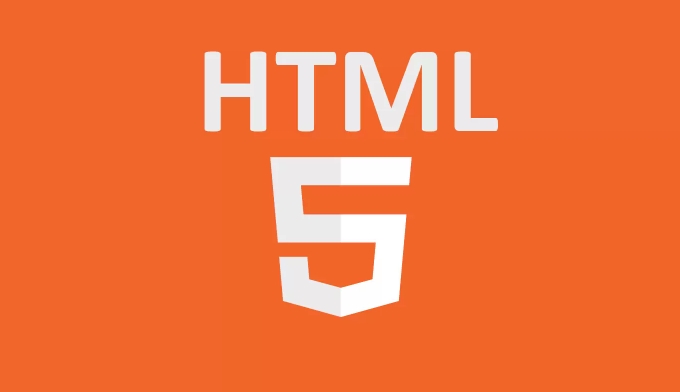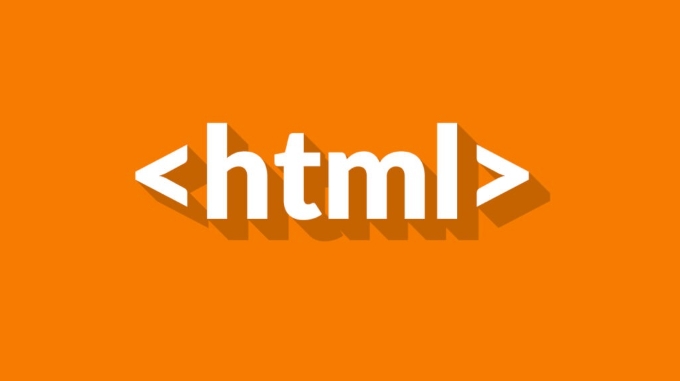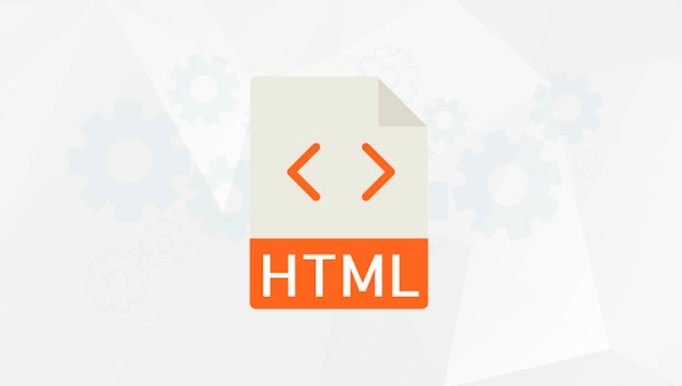 Web Front-end
Web Front-end
 HTML Tutorial
HTML Tutorial
 What are Server-Sent Events (SSE) and how do you use them with HTML?
What are Server-Sent Events (SSE) and how do you use them with HTML?
What are Server-Sent Events (SSE) and how do you use them with HTML?
Jul 10, 2025 pm 12:26 PMServer-Sent Events (SSE) is an HTTP-based HTML5 standard API that allows servers to push real-time data to clients one-way. 1. It establishes a persistent connection through the EventSource object. The server sends data in text/event-stream format, and each push triggers client event processing; 2. Simple to use, the front-end only needs to listen to message events or specific event types to receive and process data; 3. The back-end needs to set Content-Type to text/event-stream and continuously output messages that match the format; 4. Common precautions include solving cross-domain problems, controlling push frequency, testing browser compatibility, etc. Compared with WebSocket, SSE is lighter and suitable for scenarios such as notifications and stock updates that only require server push.

Server-Sent Events (SSE) is a technology that allows servers to push real-time updates to browsers. Instead of requiring the browser to poll repeatedly like the traditional request-response mode, it establishes a persistent connection where the server can send data to the client at any time. Compared with WebSocket, SSE is lighter and easier to implement, and is especially suitable for scenarios where only one-way push is required for servers, such as real-time notifications, stock price updates, log information, etc.

What are Server-Sent Events?
SSE is a standard API provided by HTML5 that allows web pages to receive automatic updates from the server. It is HTTP-based, so no special protocol or server settings are required. Unlike WebSocket, SSE only supports one-way communication from the server to the client, which means that the client can only listen and cannot actively send messages.
SSE uses the EventSource object to create a connection and receives data by listening to message events. The data returned by the server must be in a specific format ( text/event-stream ), and an event will be triggered every time new data is available.

How to use SSE in HTML?
To use SSE, you can do it in just a few lines of JavaScript:
<script>
const eventSource = new EventSource("your-server-endpoint");
eventSource.onmessage = function(event) {
console.log("Message received:", event.data);
};
</script>This code does three things:

- Created an
EventSourceinstance pointing to the specified URL. - Listen to the
onmessageevent, which will be triggered when the server sends data. - Print out the received data.
If the message sent by the server has an event type (such as notification ), you can also use .addEventListener() to listen for specific events:
eventSource.addEventListener('notification', function(event) {
document.getElementById('notifications').innerText = event.data;
});This way you can handle differently according to different types of events.
How to cooperate with the backend?
The backend needs to do two main points:
- Set the correct response header to
Content-Type: text/event-stream. - Continuously output messages that conform to SSE format.
For example, a simple Node.js Express interface might look like this:
app.get('/stream', (req, res) => {
res.setHeader('Content-Type', 'text/event-stream');
setInterval(() => {
res.write(`data: ${new Date()}\n\n`);
}, 1000);
}); This code will send the current time to the client every second. Note \n\n means that a complete message ends.
Different languages ??and frameworks have slightly different writing methods, but the core logic is the same: keep the connection open and continue to send content starting with data: :.
Frequently Asked Questions and Precautions
- Cross-domain problem : If the front-end and back-end are not under the same domain name, remember to set CORS, otherwise it may not be connected.
- Connection disconnection and reconnection : SSE will automatically try to reconnect after the connection is disconnected by default, but you can actively close it through
eventSource.close(). - Performance considerations : Although SSE is a long connection, it consumes little to server resources. However, you should also pay attention to controlling the transmission frequency to avoid stress caused by frequent pushes.
- Browser compatibility : Modern browsers basically support SSE, but you should pay attention to testing on mobile and old devices.
Basically that's it. Although SSE is not as powerful as WebSocket, it is sufficient in many practical application scenarios, and it is simpler to implement and has lower maintenance costs.
The above is the detailed content of What are Server-Sent Events (SSE) and how do you use them with HTML?. For more information, please follow other related articles on the PHP Chinese website!

Hot AI Tools

Undress AI Tool
Undress images for free

Undresser.AI Undress
AI-powered app for creating realistic nude photos

AI Clothes Remover
Online AI tool for removing clothes from photos.

Clothoff.io
AI clothes remover

Video Face Swap
Swap faces in any video effortlessly with our completely free AI face swap tool!

Hot Article

Hot Tools

Notepad++7.3.1
Easy-to-use and free code editor

SublimeText3 Chinese version
Chinese version, very easy to use

Zend Studio 13.0.1
Powerful PHP integrated development environment

Dreamweaver CS6
Visual web development tools

SublimeText3 Mac version
God-level code editing software (SublimeText3)

Hot Topics
 How do I stay up-to-date with the latest HTML standards and best practices?
Jun 20, 2025 am 08:33 AM
How do I stay up-to-date with the latest HTML standards and best practices?
Jun 20, 2025 am 08:33 AM
The key to keep up with HTML standards and best practices is to do it intentionally rather than follow it blindly. First, follow the summary or update logs of official sources such as WHATWG and W3C, understand new tags (such as) and attributes, and use them as references to solve difficult problems; second, subscribe to trusted web development newsletters and blogs, spend 10-15 minutes a week to browse updates, focus on actual use cases rather than just collecting articles; second, use developer tools and linters such as HTMLHint to optimize the code structure through instant feedback; finally, interact with the developer community, share experiences and learn other people's practical skills, so as to continuously improve HTML skills.
 How do I use the element to represent the main content of a document?
Jun 19, 2025 pm 11:09 PM
How do I use the element to represent the main content of a document?
Jun 19, 2025 pm 11:09 PM
The reason for using tags is to improve the semantic structure and accessibility of web pages, make it easier for screen readers and search engines to understand page content, and allow users to quickly jump to core content. Here are the key points: 1. Each page should contain only one element; 2. It should not include content that is repeated across pages (such as sidebars or footers); 3. It can be used in conjunction with ARIA properties to enhance accessibility. Usually located after and before, it is used to wrap unique page content, such as articles, forms or product details, and should be avoided in, or in; to improve accessibility, aria-labeledby or aria-label can be used to clearly identify parts.
 How do I create a basic HTML document?
Jun 19, 2025 pm 11:01 PM
How do I create a basic HTML document?
Jun 19, 2025 pm 11:01 PM
To create a basic HTML document, you first need to understand its basic structure and write code in a standard format. 1. Use the declaration document type at the beginning; 2. Use the tag to wrap the entire content; 3. Include and two main parts in it, which are used to store metadata such as titles, style sheet links, etc., and include user-visible content such as titles, paragraphs, pictures and links; 4. Save the file in .html format and open the viewing effect in the browser; 5. Then you can gradually add more elements to enrich the page content. Follow these steps to quickly build a basic web page.
 How do I create checkboxes in HTML using the element?
Jun 19, 2025 pm 11:41 PM
How do I create checkboxes in HTML using the element?
Jun 19, 2025 pm 11:41 PM
To create an HTML checkbox, use the type attribute to set the element of the checkbox. 1. The basic structure includes id, name and label tags to ensure that clicking text can switch options; 2. Multiple related check boxes should use the same name but different values, and wrap them with fieldset to improve accessibility; 3. Hide native controls when customizing styles and use CSS to design alternative elements while maintaining the complete functions; 4. Ensure availability, pair labels, support keyboard navigation, and avoid relying on only visual prompts. The above steps can help developers correctly implement checkbox components that have both functional and aesthetics.
 How do I minimize the size of HTML files?
Jun 24, 2025 am 12:53 AM
How do I minimize the size of HTML files?
Jun 24, 2025 am 12:53 AM
To reduce the size of HTML files, you need to clean up redundant code, compress content, and optimize structure. 1. Delete unused tags, comments and extra blanks to reduce volume; 2. Move inline CSS and JavaScript to external files and merge multiple scripts or style blocks; 3. Simplify label syntax without affecting parsing, such as omitting optional closed tags or using short attributes; 4. After cleaning, enable server-side compression technologies such as Gzip or Brotli to further reduce the transmission volume. These steps can significantly improve page loading performance without sacrificing functionality.
 How do I use the element to represent the footer of a document or section?
Jun 25, 2025 am 12:57 AM
How do I use the element to represent the footer of a document or section?
Jun 25, 2025 am 12:57 AM
It is a semantic tag used in HTML5 to define the bottom of the page or content block, usually including copyright information, contact information or navigation links; it can be placed at the bottom of the page or nested in, etc. tags as the end of the block; when using it, you should pay attention to avoid repeated abuse and irrelevant content.
 How has HTML evolved over time, and what are the key milestones in its history?
Jun 24, 2025 am 12:54 AM
How has HTML evolved over time, and what are the key milestones in its history?
Jun 24, 2025 am 12:54 AM
HTMLhasevolvedsignificantlysinceitscreationtomeetthegrowingdemandsofwebdevelopersandusers.Initiallyasimplemarkuplanguageforsharingdocuments,ithasundergonemajorupdates,includingHTML2.0,whichintroducedforms;HTML3.x,whichaddedvisualenhancementsandlayout
 How do I use the tabindex attribute to control the tab order of elements?
Jun 24, 2025 am 12:56 AM
How do I use the tabindex attribute to control the tab order of elements?
Jun 24, 2025 am 12:56 AM
ThetabindexattributecontrolshowelementsreceivefocusviatheTabkey,withthreemainvalues:tabindex="0"addsanelementtothenaturaltaborder,tabindex="-1"allowsprogrammaticfocusonly,andtabindex="n"(positivenumber)setsacustomtabbing





